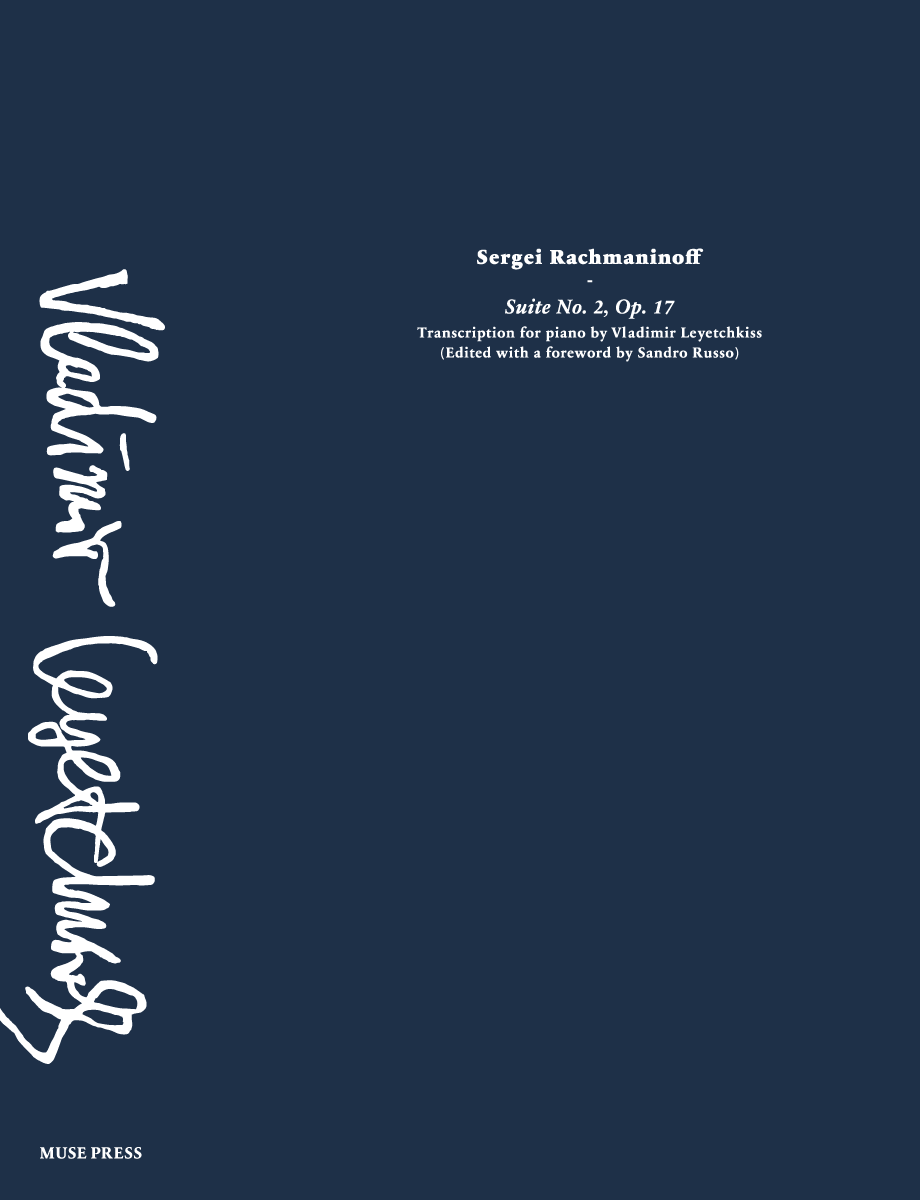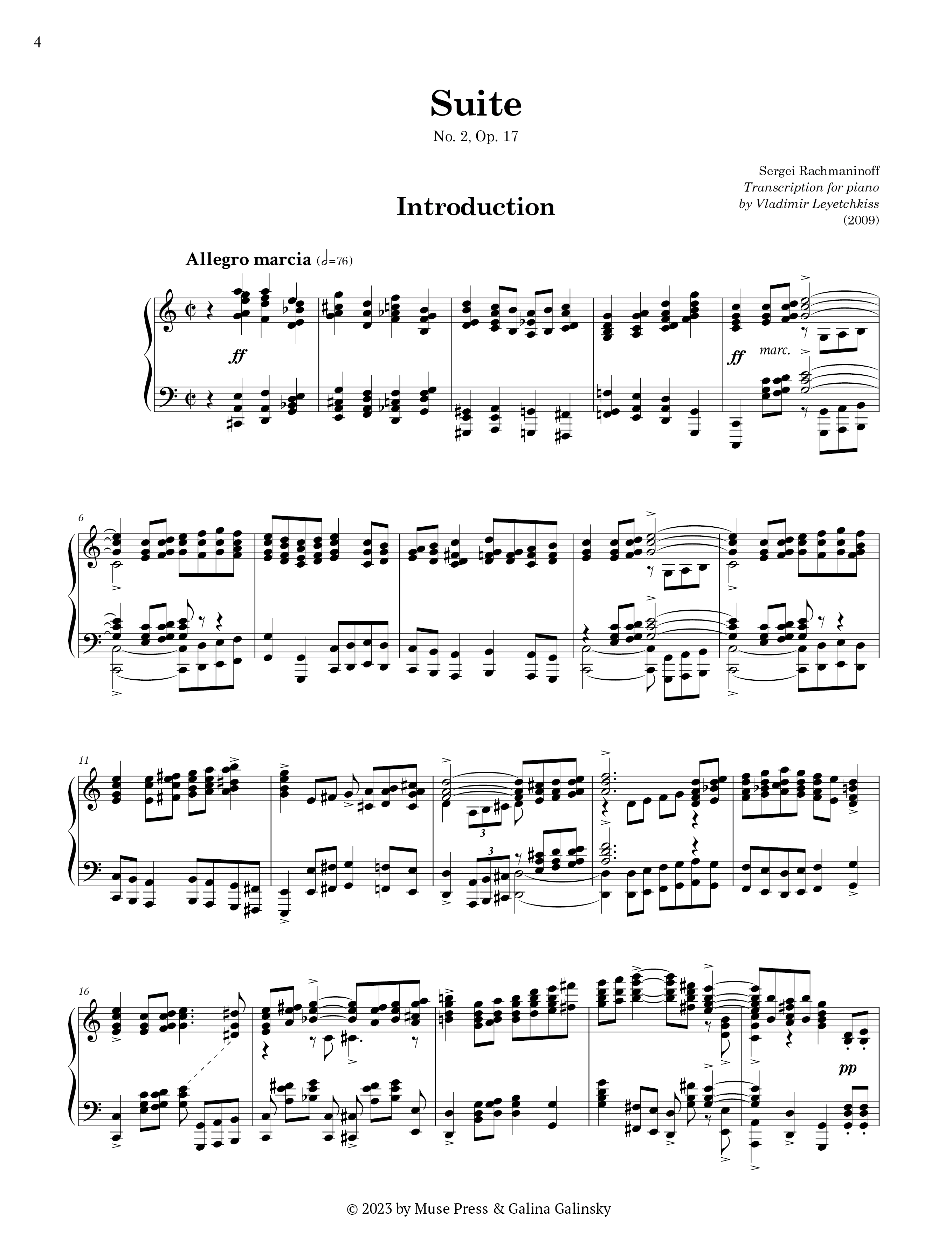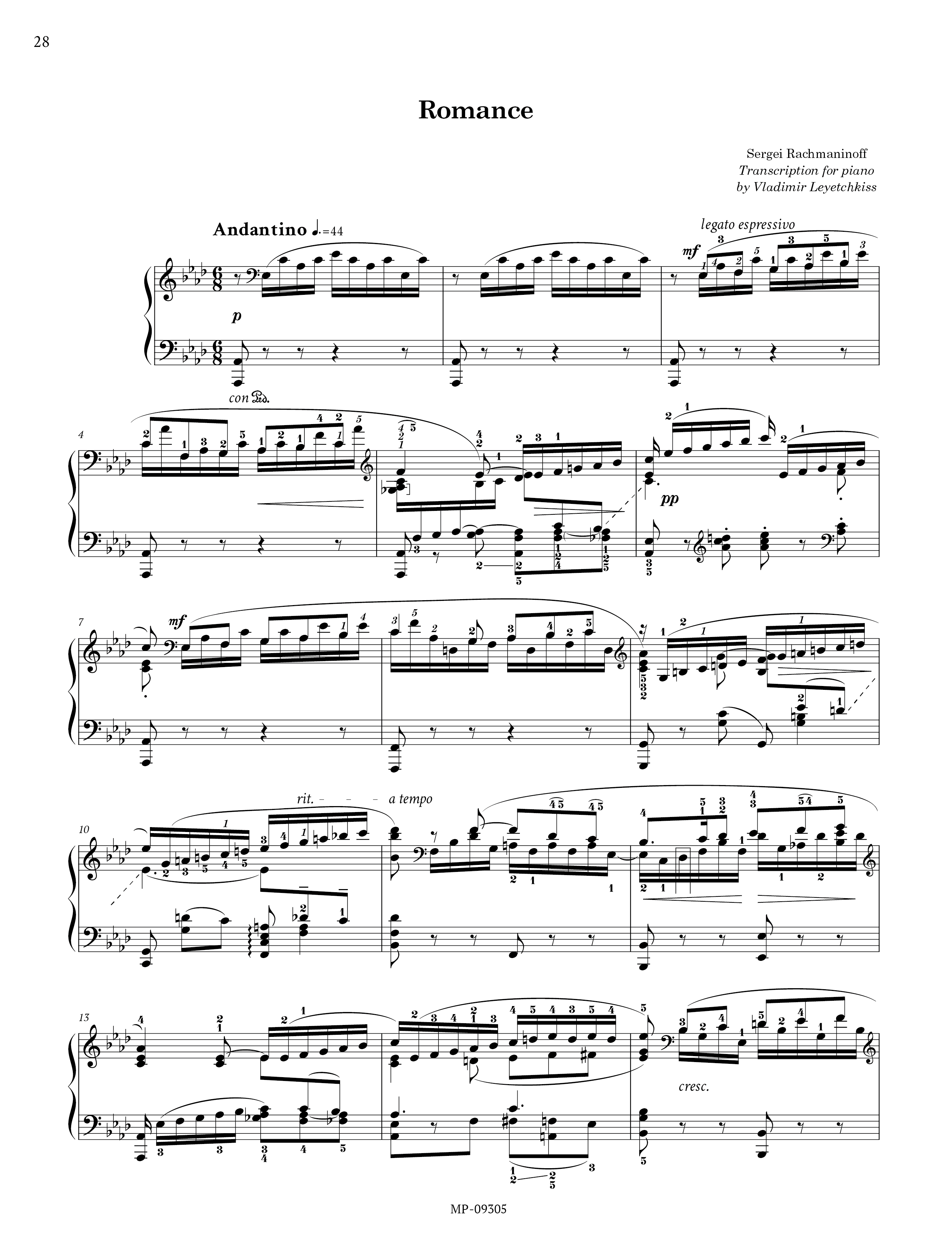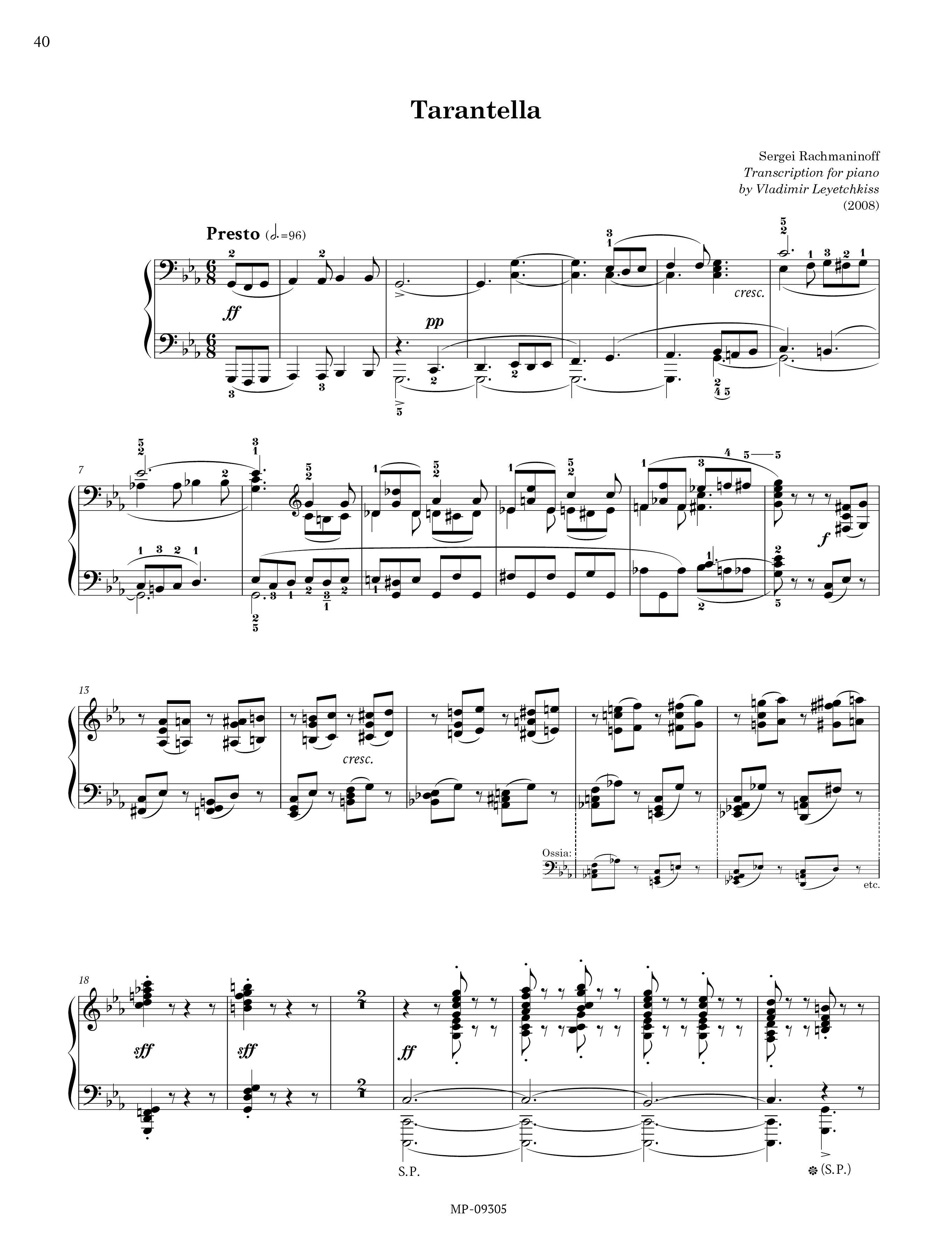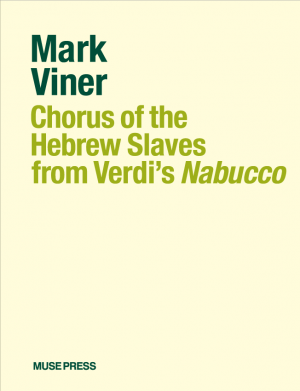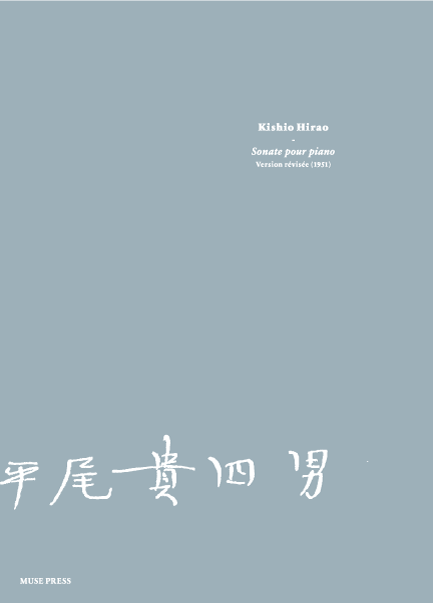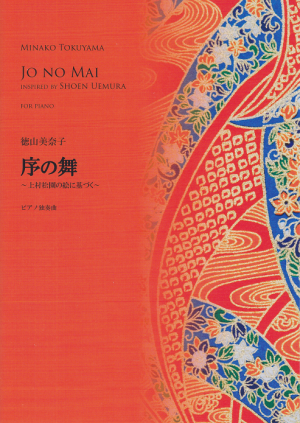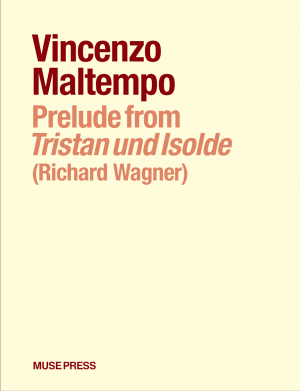Description
The long-awaited first publication of the piano solo transcription of Rachmaninoff’s masterpiece “Suite No. 2” for two pianos, which has become known among piano enthusiasts for the recording by Cyprien Katsaris.
NOTES RACHMANINOFF 2nd SUITE Op. 17
Vladimir Leyetchkiss’s solo piano transcription of the Rachmaninoff 2nd Suite for two pianos represents, without a doubt, one of his greatest and most ambitious accomplishments amongst his vast piano-transcriptions output. Unlike Leyetchkiss’s numerous transcriptions of orchestral works (e.g., Debussy’s Fêtes, Ravel’s Boléro), this is a composition Rachmaninoff conceived for two pianos, though in a very “orchestral” and grand fashion!
Despite the many intricacies in Rachmaninoff’s original, two-piano version of the Suite, Leyetchkiss masterfully imbues his entire solo-piano transcription with a laudable naturalness and pianistic ingenuity. Mr. Leyetchkiss himself once expressed to me he strongly believed any work written for two pianos could indeed exist in a solo-piano version. It should be noted, however, that one of the keys to his success in this genre is to avoid transcribing for the piano in an over-elaborated or over-contrapuntal manner (such as Godowsky).
In this respect, it’s truly remarkable how Leyetchkiss’s transcription of the 2nd Suite managed to slim down the intricate textures of the original score while still enabling us to hear each of Rachmaninoff’s soaring lines. He does so without altering either the clarity of the harmonic structure or the voice-leading, both of which remain quite pristine. Striking, as well, is Leyetchkiss’s way of conferring new pianistic gestures and tonal characteristics to each movement of the Suite.
From the onset of the first movement, Introduction, one can actually appreciate a new sonority concept, something more blended and unique, even more noble; obviously, this stands in contrast to the massive textures of the two-piano version. The cantabile lines themselves assume more transparent colors and nuances.
The Waltz and Romance movements are particularly dear to me, inasmuch as my learning and premiering them in several venues opened the door to friendship with Mr. Leyetchkiss. Both evince prodigious skills in the art of the piano transcription and require no less of the pianist in terms of their execution, particularly the Waltz!
While the Waltz’s double notes, in fact, may easily appear rather daunting to the performer at first, it doesn’t take long to appreciate their pianistic congeniality. Every melodic line in this movement acquires new lyrical qualities; transcribed with such ingenuity and elegance, it is as if the piece found a more pure nature in this solo-piano version. The climactic sections, boasting some truly grandiose and highly virtuosic stretches of piano writing, indeed amplify the emotional range of the work.
The Romance represents the emotive heart of the suite. It is here that Leyetchkiss pulls off some of his finest transcriber’s feats, evoking spellbinding, sonic atmospheres and rich symphonic textures. As in the case of the Waltz, it is impossible not to appreciate Leyetchkiss’s rendition of the Romance as an independent character piece of exquisite sensuality and pure Russian nostalgia, thus pushing the limits of a “literal” piano transcription.
The Tarantella, on a larger scale than the Waltz, is another “knuckle-buster” movement of the transcription, full of instrumental creativity and pianistic fireworks. It even invites comparisons with Liszt’s Tarantelle di bravura d’après la Tarantelle de La muette de Portici d’Auber, both in its stature and wizardry!
I have to believe Rachmaninoff himself would have been captivated by Vladimir Leyetchkiss’s solo-piano transcription of one of his most inspired compositions. The new dimensions and heights to which the Suite is brought help distinguish it among the piano literature, and certainly warrant our ongoing gratitude to Mr. Leyetchkiss.
Sandro Russo
